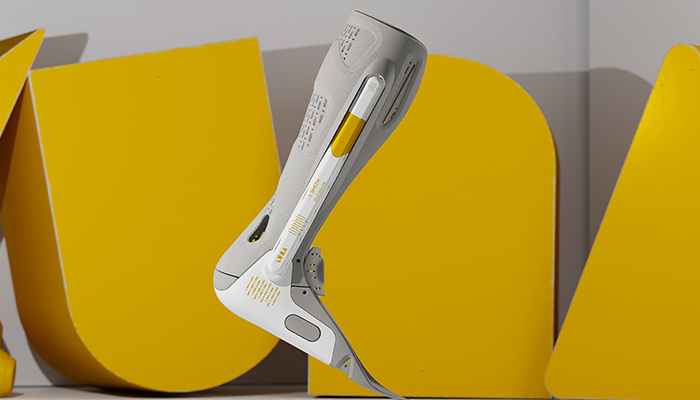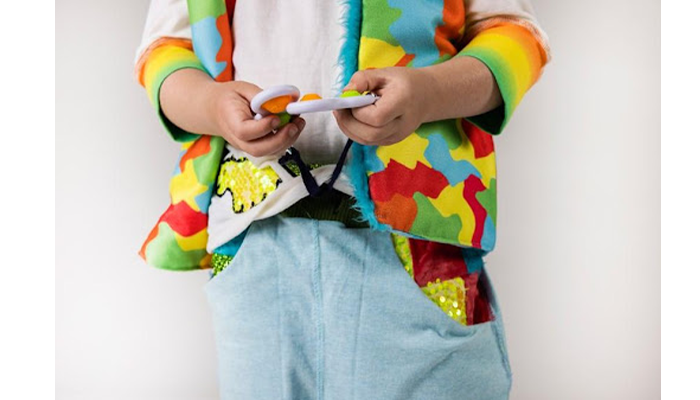The Savic C-Series is Australia’s first emission-free, full-sized, high-performance electric motorcycle. Based on the classically beautiful café racers of the 1970s, the three models offer a world-leading departure for the Australian motorcycle industry, combining exhilarating performance and minimal maintenance with the latest battery and power conversion capabilities of modern electric vehicle technology.
Overall Winner and Best in Category - Product Design
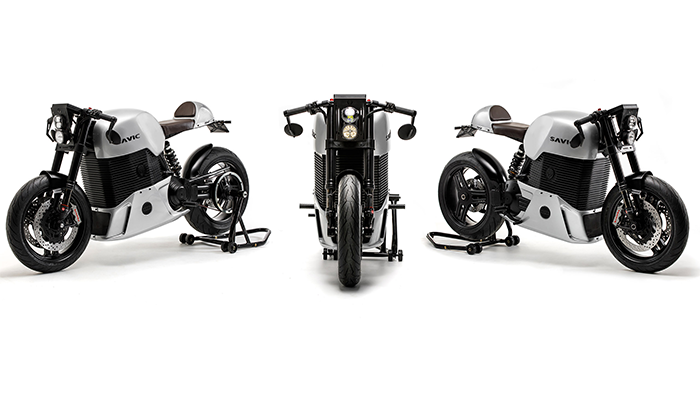
Image by Jason Lau
Designers Dennis Savic and David Hendroff’s mission was to design a head-turning motorcycle that combined the power and handling of a traditional cafe racer with the latest electric battery and power conversion technologies. By introducing a lightweight cast-aluminium frame, the body integrates a bulky 80kg powertrain, without detracting from the fine lines and distinctive ‘racing’ style of an iconic 1970s motorcycle.
Chair of the Victorian Premier’s Design Awards Jury, Celina Clarke, says “The Savic C-Series has been immaculately designed in every sense of the word. The attention to design details - from its elegant lines, handcrafted chrome and aluminium finishes right through to the design of their website and branding - it is clear this Victorian company is leading by design in everything they do.”
Minister for Creative Industries, Minister Danny Pearson, said “The Victorian design sector is responsible for bringing more than $6 billion into our state economy annually from local and international sources, including $400 million in exports. Savic Motorcycles is an exceptional example of Victorian design and innovation, with their focus on ground-breaking industrial design and aspiration to revive Australia’s automotive industry with a new generation of technology, design and engineering.”
Savic’s suite of 25kW, 40kW and 60kW motorcycles result in Australia’s first true 21st century motorbike, a testament to the emerging electric revolution, which will delight riders with its power, data ‘smarts’, and stylish looks; establishing a new benchmark for design excellence. Savic is making the dream of electric motorcycling accessible to younger, more price-conscious consumers who want to travel on an Australian-made, zero-emissions vehicle - but do not have the budget to afford an expensive high-powered bike.
Best in Category - Architectural Design
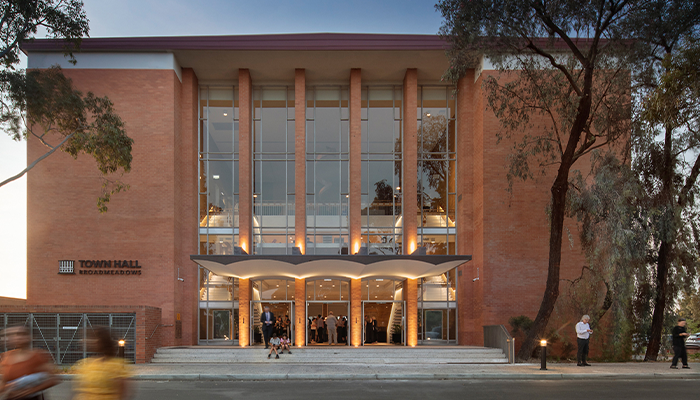
Broadmeadows Town Hall. Image: John Gollings
The redevelopment of the Broadmeadows Town Hall is an important repository of community memory. Responding to contemporary times and needs, the Town Hall now replicates a hybrid of many functions including civic, cultural and commercial. Two dramatic cuts to the existing facade and additional new commercial hub, reveal the life and activities within including a community business incubator, gallery, office and event spaces. Around the perimeter, landscaping and service elements define outdoor spaces for visitors.
With the renovation design led by Kerstin Thompson Architects for the Hume City Council, the Broadmeadows Town Hall is an important repository of community memory.
Highly Commended Award - Architectural Design
Best in Category - Communication Design
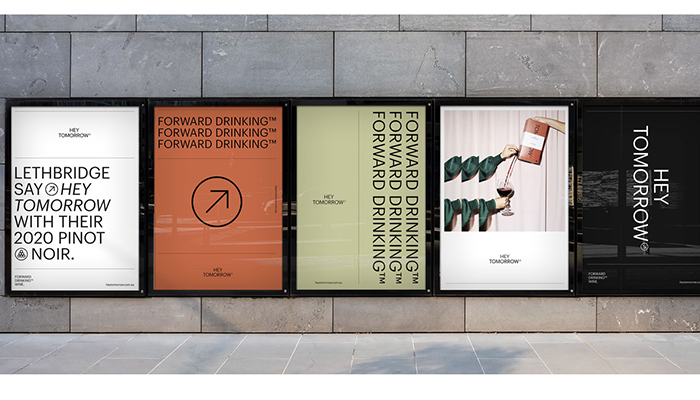
Hey Tomorrow. Images: Supplied
Motherbird’s communication design strategy sets out to redefine how we consume wine and the pact that it has on our planet, called Forward Drinking. Boxed wine has the reputation of poorer quality at a lower price, suggesting that if you want a higher quality glass of wine, it has to come from a bottle.
Hey Tomorrow partnered with winemakers to put exceptional wine in a box, lasting 30 days once opened, leaving no wastage, as well as a carbon footprint that is approximately 8 x lower than the glass bottle equivalent. Addressing the issue of climate change, in Hey Tomorrow’s short history, the greenhouse gas emissions saved by customers are equivalent to driving 1 mid-sized car around for 1.2 years, or the equivalent of 1663kg of glass going to landfill.
With humankind desperately needing to innovate to reduce the impact of climate change, Hey Tomorrow have looked to the past to guide the future, by redefining both the dangers of climate change, as well as the perceptions of boxed wine. They reveal that by changing how people viewed boxed wine from a taste, value and environmental impact.
Best in Category - Design Strategy
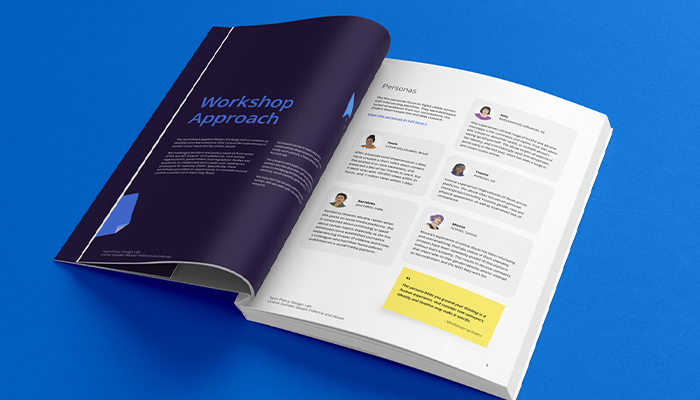
Web Foundation: Online Gender Based Violence. Images: Supplied
Globally nearly 40% of women report being subjected to online violence, with the number being even higher among young women and girls. Working with the Web Foundation and Feminist Internet, Craig Walker ran a series of global workshops that generated recommendations and prototypes, which helped to secure public commitments from the world’s largest tech companies (Facebook, Google, TikTok and Twitter) to tackle online gender-based violence.
The three online workshops brought together 120+ leaders from 35 countries with diverse perspectives and backgrounds to collaborate and create prototypes. Over the course of the three-hour workshops, the groups developed solutions and prototypes for content curation and reporting flows for specific scenarios. The scenarios focussed on the experiences and needs of highly visible women, such as politicians, journalists, activists and influencers.
The role that the Melbourne Studio of Craig Walker played in this truly world-wide initiative is testament to the high standard that Victorian-based design is held to on the global stage.”
Some of the steps that the companies agreed to implement, as a direct result of the report include building better ways for women to curate their safety online and to implement improvements to reporting systems, with a variety of strategies attached. The commitment by companies with a combined total user base of over 4 billion people, represents a significant step in addressing gender-based violence online.
Highly Commended Award - Design Strategy
- YourGround designed by Monash University, Art Design & Architecture and XYX Lab
Best in category - Digital Design
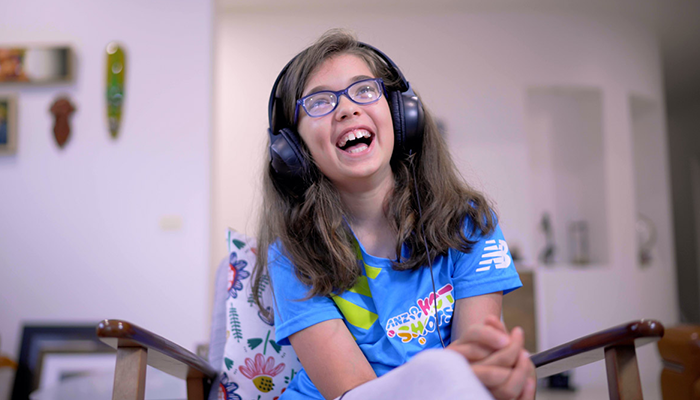
Action Audio. Image: Supplied
Action Audio is an innovative accessibility audio service for sports broadcasts that allows people with blindness and low vision to experience the sports they love, in real time, alongside their sighted friends and family.
Applied to tennis, Action Audio translates live ball position and other on-court data into a spatialised sound design that allows audiences to ‘see’ the state of play through sound, without the need for visual information.
For the approximately 600,000 Australians living with blindness or low vision, the experience of broadcast sport is severely compromised. Televised coverage relies overwhelmingly on visual information, while radio commentary is often too slow to give fans a true sense of the live action.
The technology is designed using eye and gaze tracking tools to deconstruct, understand and explore the sighted spectator experience as a way to inform the blind/low vision experience. Four key sound design principles guided the creation, including social consideration, existing sound languages, accentuated tension points and selective auditory attention.
Highly Commended Award - Digital Design
- Yalinguth designed by Storyscape for the Wurundjeri Council.
Best in category - Fashion Design
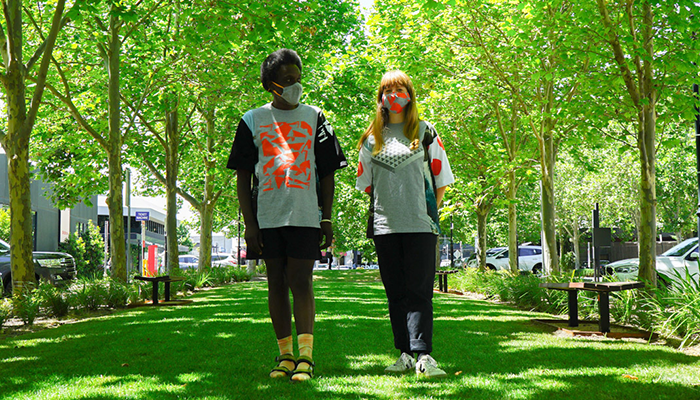
MPavilion Uniform 2020. Image by Jesse Eddy
MPavilion is an architectural commission which annually engages a leading architect to design a pavilion for Melbourne, which then becomes an innovative civic space for the community to enjoy a free diverse cultural program. Chelsea Hickman was asked to design the front of house staff uniforms for the MPavilion 2020 season. In keeping with the themes of reuse and repurpose of the MPavilion program, Chelsea created sustainable, durable workwear fabricated entirely from uniforms recycled from five prior MPavilion seasons.
At a time when many had been disadvantaged and displaced due to the pandemic, MPavilion 2020 adapted its operation to be as sustainable and efficient as possible. Chelsea was tasked with designing workwear made entirely from recycled MPavilion attire, with the garments being lightweight, breathable, easy to move in and aesthetically interesting in order to ensure the front-of-house staff felt comfortable and secure on the job. Additionally, the pieces needed to be highly-practical, long-lasting and tough to withstand the nature of the staff’s daily tasks, as well as be suitable for Melbourne’s very varied weather conditions.
The MPavilion 2020 Uniform is a small-run of purpose designed, hand-constructed hard-wearing and long-lasting garments, made from repurposing obsolete fabrics, rather than sourcing new materials.








